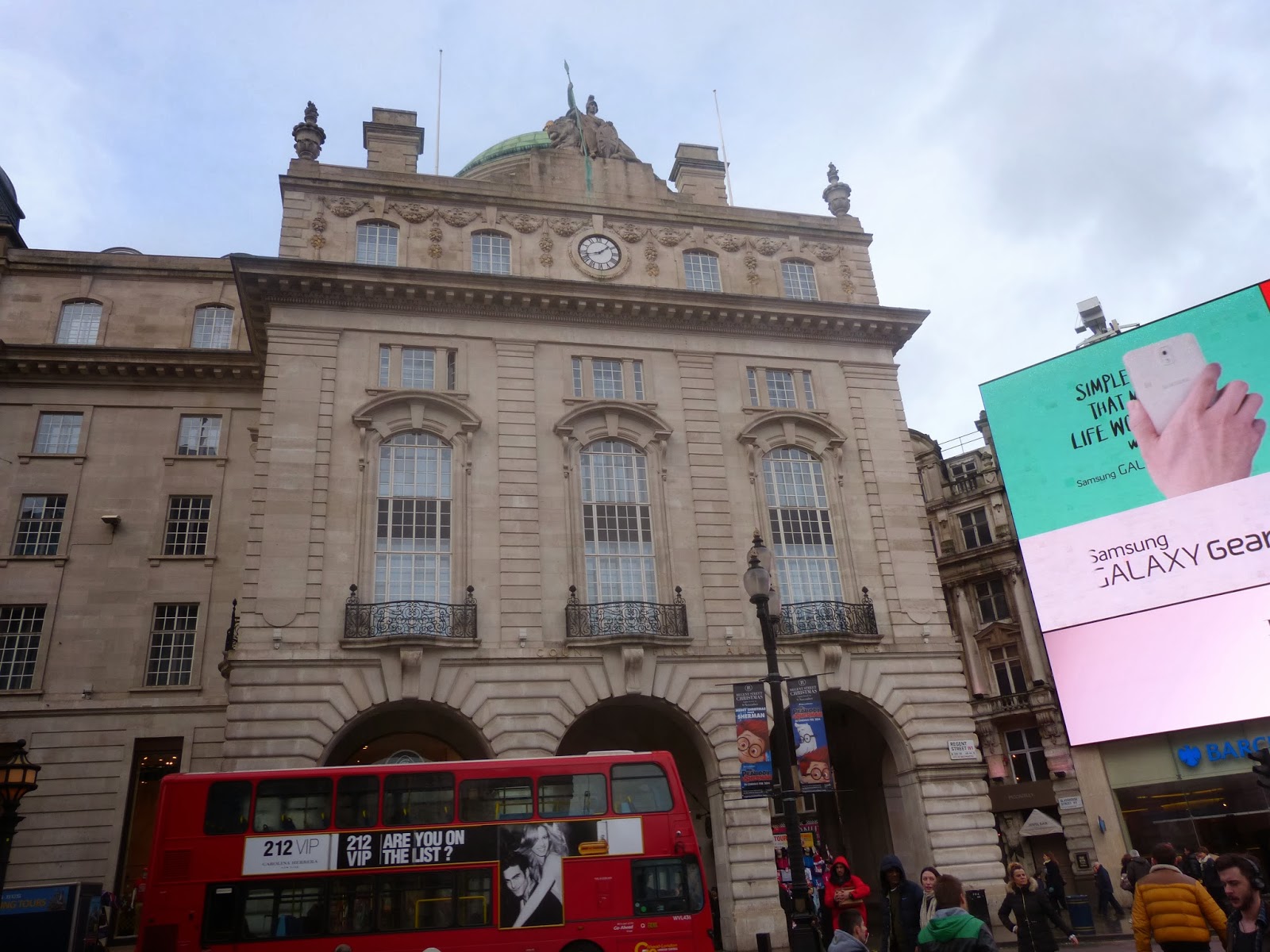Strand forms part of an ancient road - it was part of the Roman road Akeman Street, and in 1002 was referred to as strondway. The word strand means shore, a reflection of the fact that this route was originally the north bank of the Thames.
There are at least three clocks on side roads just off Strand but I have not included them here as that would be cheating on the Londonopoly theme. I have included the clocks in the central courtyard of Somerset House on the Strand, but not the one in Charing Cross station (I never claimed to be consistent).
Also not included is Shell Mex House, which is technically on the Strand, but whose huge clock cannot be seen from this road.
First stop (and stopped it certainly is) is the Civil Service Supply Association Ltd clock.
It is a shame that this isn't working as it is one of my favourite London clocks because of its simple design, Arabic numerals rather than the all too common Roman ones, bright blue border, large size, and prominent position on a plain yet elegant wall.
Further down, on the same side of the road, is the Lyceum Tavern with its barrel clock.
A quick diversion into the entrance to the Somerset House courtyard, with its clock towers on the eastern and western blocks.
And now for two splendid churches, both now situated in traffic islands in the middle of the road. The first is St Mary le Strand. Completed in 1717, this church was designed by James Gibbs, who was also responsible for St Martin-in-the-Fields in Trafalgar Square.
The second church is St Clements Dane - Oranges and lemons say the bells of St Clement's (see Londonopoly #4). Incidentally the fruit connection of Strand is continued in the old music hall song "Let's All Go Down The Strand" with the memorable lines 'Let's all go down the Strand - Have a banana!'.
The church dates from 1680 and is by Sir Christopher Wren. However, if you thought that the tower looked similar to that of St Mary le Strand you would be right, as it is a later edition of 1720 by James Gibbs.
Finally, but most magnificently, is the clock on the Royal Courts of Justice.
It looks particularly good on a sunny day, but in any weather the ornamentation on this timepiece is superb.
This has to be in my top five of clocks in the country.
The building itself was opened by Queen Victoria in December 1882, and is often referred to as the last great Gothic public building in London. Some of the clocks inside the building are included in my posting of 29 September 2013.
So, time for the final Londonopoly reckoning. Excluding Somerset House, it is five clocks for £220 and hence £44 per clock.
Previous postings in this series:
Bond Street - 4 August 2013
Oxford Street - 30 November 2013
Regent Street - 4 January 2014
Trafalgar Square - 13 January 2013






































